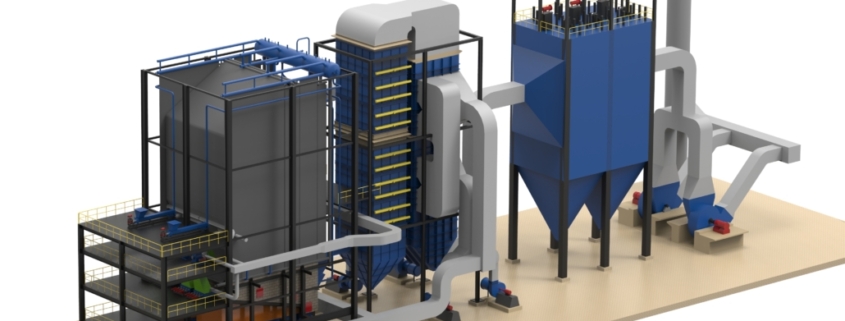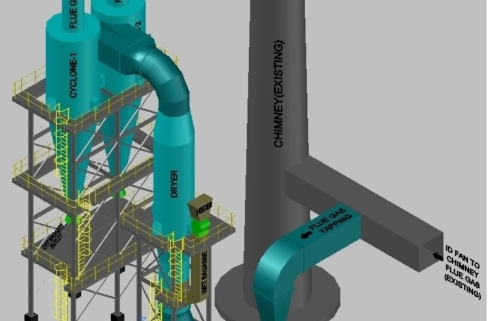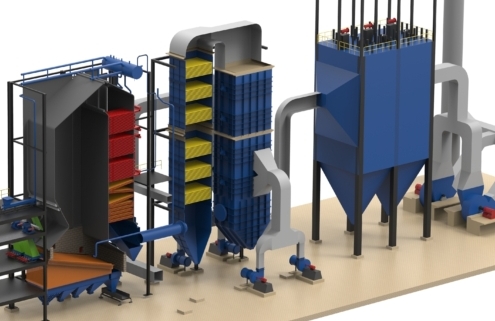How is Biomass Energy Generated? Exploring Electricity from Biomass
In our relentless pursuit of sustainable and eco-friendly energy sources, biomass energy has emerged as a shining star on the horizon. It’s an energy source that offers the promise of reducing our carbon footprint while providing a reliable source of electricity.
But how is biomass energy generated, and what makes it such an attractive option for a greener future? In this comprehensive blog, we’ll unravel the intricacies of how is biomass energy generated and shed light on its remarkable journey from organic matter to electricity.
How is Biomass Energy Generated? Exploring Electricity from Biomass

Understanding Biomass Energy:
Before we delve into the mechanics of biomass energy generation, let’s grasp the fundamental concept. Biomass energy is derived from organic materials, such as wood, crop residues, animal waste, and even algae.
These materials are collectively referred to as biomass, and they contain stored energy from the sun, captured through the process of photosynthesis. This stored energy can be released through various conversion methods to generate electricity and heat.
Must Read: Understanding Biomass Energy: Is it Renewable or Not?
The Biomass Energy Generation Process:
Biomass energy generation involves several steps, each contributing to the efficient extraction of energy from organic matter:
Feedstock Collection:
The first step in biomass energy generation is the collection of feedstocks. This can include forestry residues, agricultural waste, energy crops, and even municipal solid waste. The choice of feedstock depends on availability, local conditions, and the intended use of the biomass energy.
Preparation and Processing:
Once collected, the biomass feedstock is often processed to remove impurities, moisture, and contaminants. This preparation phase ensures the efficiency of energy conversion processes.
Conversion Methods:
Biomass energy can be converted into electricity through various methods:
Combustion:
This is the most common method, where biomass is burned to produce heat. The heat is then used to generate steam, which drives a turbine connected to a generator, producing electricity. Combustion can occur in dedicated biomass power plants or in co-firing facilities, where biomass is burned alongside coal in existing power plants.
Gasification:
Gasification involves heating biomass to high temperatures in a controlled environment, typically with limited oxygen.
This process creates a synthetic gas, known as syngas, which can be burned for electricity generation or used in other applications, such as producing biofuels or chemicals.
Anaerobic Digestion:
This method uses microorganisms to break down organic matter, such as animal manure or sewage, in an oxygen-free environment. The process produces biogas, mainly methane, which can be used for electricity generation.
Pyrolysis:
Pyrolysis is the thermal decomposition of biomass in the absence of oxygen, resulting in biochar, liquid bio-oil, and syngas. These products can be used for various purposes, including electricity generation.
Electricity Generation:
Regardless of the conversion method, the generated heat, syngas, or biogas is used to produce steam, which drives a turbine connected to a generator. As the turbine spins, it generates electricity, which can be fed into the grid or used on-site.
The Environmental Benefits:
Biomass energy generation offers several environmental benefits:
Carbon Neutrality:
Biomass energy is considered carbon-neutral because the carbon dioxide (CO2) released during combustion or conversion is offset by the CO2 absorbed during the growth of the biomass feedstock. This makes biomass energy generation a crucial tool in reducing greenhouse gas emissions.
Waste Reduction:
Biomass energy can be sourced from agricultural waste, forestry residues, and other organic materials that would otherwise be disposed of in landfills. By utilizing these materials for energy production, biomass energy helps reduce waste and alleviate the burden on landfills.
Renewable Resource:
Biomass is a renewable resource that can be replenished through responsible forestry and agriculture practices. This ensures a consistent and long-term source of energy.
Challenges and Considerations:
While biomass energy generation offers numerous advantages, it’s not without its challenges and considerations:
Emissions:
Biomass combustion releases particulate matter, carbon monoxide, and other pollutants into the atmosphere. Modern technologies and emission controls are essential for minimizing these environmental impacts.
Resource Availability:
Biomass availability can vary seasonally and regionally, making it challenging to maintain consistent energy production. Efficient resource management is key.
Land Use:
Large-scale biomass production may require substantial land and water resources, potentially impacting ecosystems, agriculture, and water supplies.
Technological Advancements:
Continued research and development are essential for improving the efficiency and environmental performance of biomass energy generation technologies.
In conclusion, biomass energy generation is a remarkable process that harnesses the power of organic matter to produce electricity in an environmentally responsible manner. Its ability to utilize a wide range of feedstock, reduce waste, and contribute to carbon neutrality makes it an attractive option in our transition towards a greener, more sustainable energy landscape. However, it’s important to address challenges related to emissions, resource availability, land use, and technological advancements to maximize the benefits of biomass energy generation.
As we explore cleaner and more sustainable energy alternatives, biomass energy generation remains a significant contender, offering a promising path towards a future powered by renewable and eco-friendly resources. By understanding how biomass energy is generated and continually improving its processes, we can play an active role in shaping a world where environmental responsibility and energy needs coexist harmoniously.















